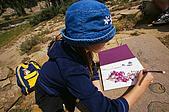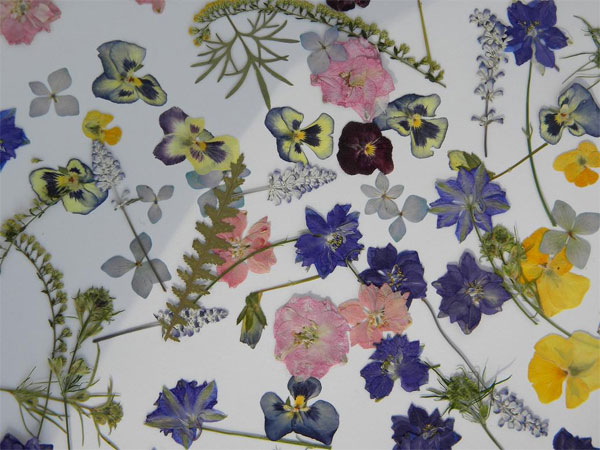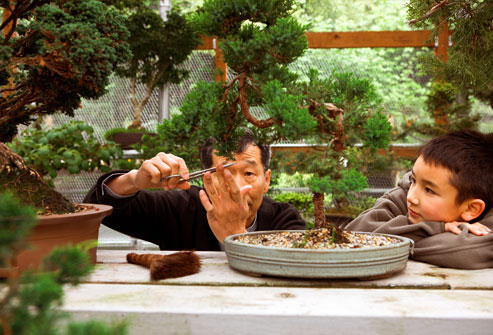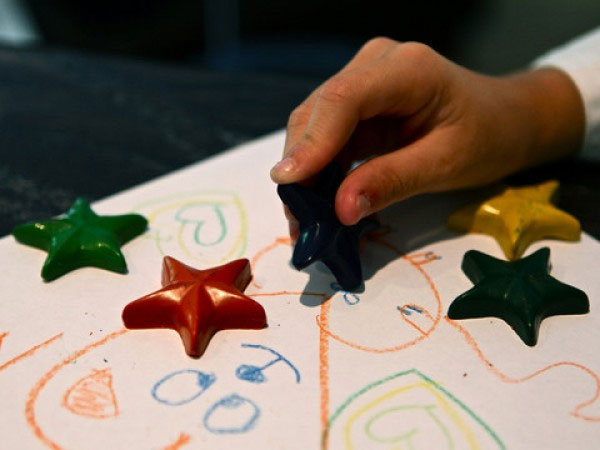Keep your children gainfully occupied. Heres a great activity you can do with them anytime! Are your children getting bored at home? Heres what you can do: Take them for a walk in the neighbourhood park, and instruct your children to pick up some fallen fresh flowers and leaves. They could pick up an entire bunch. When you reach home, separate the good flowers and roses from any dead, rotten or uninteresting pieces. Once you have a nice selection, pluck out the stems from the leaves and flowers. Get hold of a fat, heavy, old book that you will not be reading. A phone directory will serve the purpose well. Alternatively, you could also use an old exercise book which is no longer required. However, a phone book is heavy and has more pages - so you will be able to press a larger number of flowers and leaves in them. Place each flower or leaf separately between the pages of the phone directory. Make sure you leave a sufficient number of pages between each leaf or flower. Keep this aside in a cool, dry place - perhaps your cupboard or bookshelf. It should preferably be kept in a place that is not accessible to sunlight. You could even place the phone directory under something heavy, to increase the press. Keep the book aside for a week to ten days. Once the flowers have been pressed and have dried, remove them from the phone book. You will now need some colourful chart paper or interesting handmade paper. Cut out the paper and fold once, so it takes the shape of a greeting card. Your child could then write out a greeting with a felt pen inside the card. Using a thinner pen, perhaps a black micro tip, she should write down a little bit about the flower or the leaf on the back of the card. Some interesting facts to include are: The name of the flower or leaf The plant or tree it grows on The season and climate the flower blooms in Where it was found (which park, which city) Your child can then proceed to add any more trivia she knows about the particular flower, leaf or plant. Encourage her to be as neat as possible, by drawing thin lines with a pencil and ruler, before beginning to write. Once this is done, your child can finally stick the flower or leaf on the face of the card, with the help of glue. She could finish off her work of art by signing the card below the leaf. This beautiful greeting card is now ready to be sent! If your child makes more than one card at a time, she can store the cards between the pages of the same directory so the flowers get further pressed on to the cards. This exercise not only keeps your child gainfully occupied, but it also helps build her interest in nature. In addition, your child will eagerly try and find information about the flowers and leaves she has gathered. Your child will also be encouraged to keep her eyes open the next time she is outdoors, and pick up any interesting flowers or leaves she finds. She can just come home and place them between the pages of her little flower press.
Keep your children gainfully occupied. Here's a great activity you can do with them anytime! Are your children getting bored at home? Here's what you can do:
Take them for a walk in the neighbourhood park, and instruct your children to pick up some fallen fresh flowers and leaves. They could pick up an entire bunch.
When you reach home, separate the good flowers and roses from any dead, rotten or uninteresting pieces. Once you have a nice selection, pluck out the stems from the leaves and flowers.
Get hold of a fat, heavy, old book that you will not be reading. A phone directory will serve the purpose well. Alternatively, you could also use an old exercise book which is no longer required. However, a phone book is heavy and has more pages - so you will be able to press a larger number of flowers and leaves in them.
Place each flower or leaf separately between the pages of the phone directory. Make sure you leave a sufficient number of pages between each leaf or flower.
Keep this aside in a cool, dry place - perhaps your cupboard or bookshelf. It should preferably be kept in a place that is not accessible to sunlight. You could even place the phone directory under something heavy, to increase the 'press'. Keep the book aside for a week to ten days.

Once the flowers have been pressed and have dried, remove them from the phone book. You will now need some colourful chart paper or interesting handmade paper. Cut out the paper and fold once, so it takes the shape of a greeting card. Your child could then write out a greeting with a felt pen inside the card.
Using a thinner pen, perhaps a black micro tip, she should write down a little bit about the flower or the leaf on the back of the card.
Some interesting facts to include are:
- The name of the flower or leaf
- The plant or tree it grows on
- The season and climate the flower blooms in
- Where it was found (which park, which city)
Your child can then proceed to add any more trivia she knows about the particular flower, leaf or plant. Encourage her to be as neat as possible, by drawing thin lines with a pencil and ruler, before beginning to write.
Once this is done, your child can finally stick the flower or leaf on the face of the card, with the help of glue. She could finish off her work of art by signing the card below the leaf.
This beautiful greeting card is now ready to be sent! If your child makes more than one card at a time, she can store the cards between the pages of the same directory so the flowers get further pressed on to the cards.
This exercise not only keeps your child gainfully occupied, but it also helps build her interest in nature. In addition, your child will eagerly try and find information about the flowers and leaves she has gathered. Your child will also be encouraged to keep her eyes open the next time she is outdoors, and pick up any interesting flowers or leaves she finds. She can just come home and place them between the pages of her little 'flower press.'













 Once the flowers have been pressed and have dried, remove them from the phone book. You will now need some colourful chart paper or interesting handmade paper. Cut out the paper and fold once, so it takes the shape of a greeting card. Your child could then write out a greeting with a felt pen inside the card. Using a thinner pen, perhaps a black micro tip, she should write down a little bit about the flower or the leaf on the back of the card. Some interesting facts to include are:
Once the flowers have been pressed and have dried, remove them from the phone book. You will now need some colourful chart paper or interesting handmade paper. Cut out the paper and fold once, so it takes the shape of a greeting card. Your child could then write out a greeting with a felt pen inside the card. Using a thinner pen, perhaps a black micro tip, she should write down a little bit about the flower or the leaf on the back of the card. Some interesting facts to include are: 
















